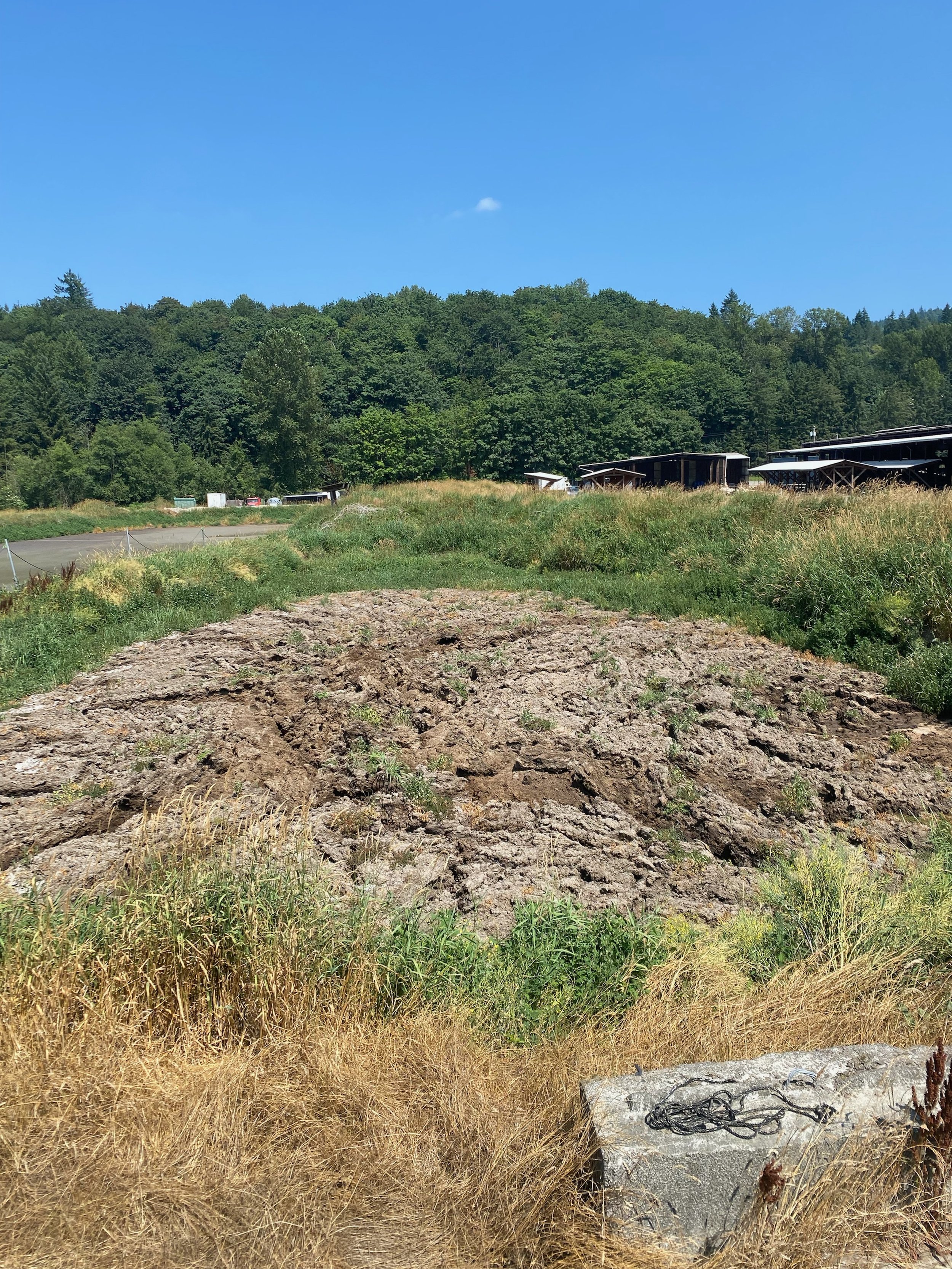Managing Manure in New Ways
/The solids buildup in the manure lagoon. To create more space for liquids, the farm would have to haul the manure to other lagoons before the solids separator.
Manure is a constant presence on farms with livestock. Appropriate storage and management of manure allows it to retain the nutrients that make it such an excellent soil amendment. Proper storage also minimizes the risk that those nutrients will end up polluting our local streams, lakes, or well water.
Peoples Creek Dairy knows all about the benefits and challenges of manure. This dairy, located south of Monroe, grows crops like grass and corn to serve as cattle feed. Once that feed leaves the cows as manure, it is stored in lagoons designed to contain liquid waste. This manure then comes full circle when it’s applied to fertilize forage crops during the growing season.
Over time, solids build up in the manure lagoons and need to be managed in order to maintain storage volume. To create more space for liquids, the farm sometimes had to haul the manure to other lagoons nearby, which is both time-consuming and expensive.
The owners determined they needed a long-term solution because they were facing the prospect of needing to apply manure during the winter, which was something they didn’t want to do. Manure application during the rainy season can cause excess nutrients to leach into ground and surface waters where they can cause water quality issues.
Peoples Creek Dairy owner, Jon Van Nieuwenhuyzen, reached out to Snohomish Conservation District for help. He worked with former district employee Eric Schuh to identify a solution.
“Managing manure on a farm requires a proactive approach,” said Eric. “The best alternative to reduce solids in the lagoon was to separate them from the waste stream and keep them out of the waste storage ponds in the first place.”
The Daritech DT360 manure solids separator, coupled with a roller press, efficiently removes about 50% of solids from the lagoon capacity.
To facilitate this, the District took advantage of a cost share opportunity to help fund the use of a Daritech DT360 manure solids separator at Peoples Creek Dairy. The DT360 coupled with a roller press efficiently removes about 50% of solids from the waste stream and reduces them into compact dry matter.
“The separator saves a lot of time and energy in handling nutrients when it comes time to apply it to the crops,” said Jon. “It puts the nutrients in a dry, dense form that’s easier to handle and safer to apply.”
The end result is more liquid capacity in the manure lagoons and reduced risks to water quality—a win-win for the farm and local waterways. Snohomish Conservation District is grateful for the chance to help cows and creeks through partnerships with dairy operations like Peoples Creek Dairy.
This project was funded by the Washington State Conservation Commission through their Shellfish Program.


